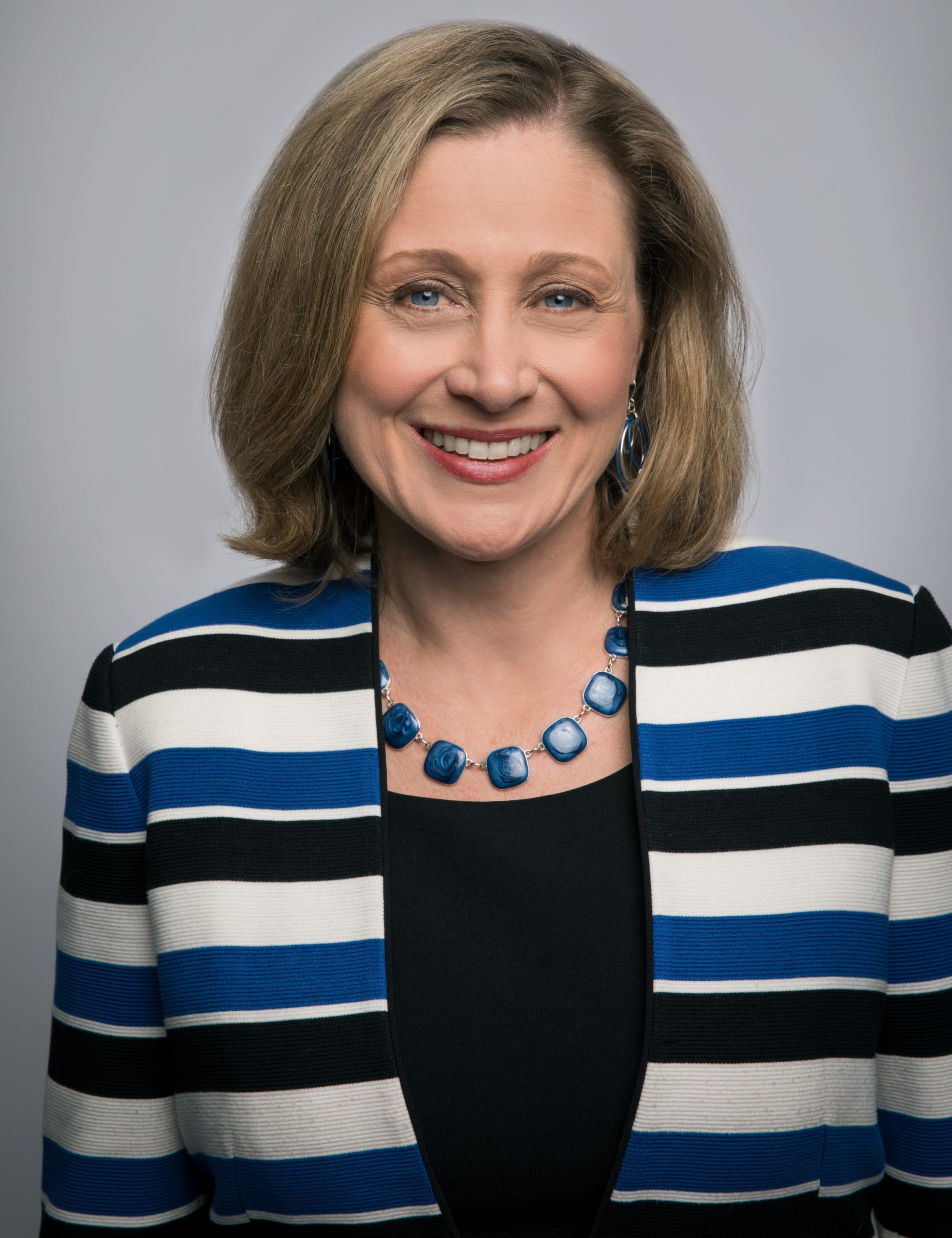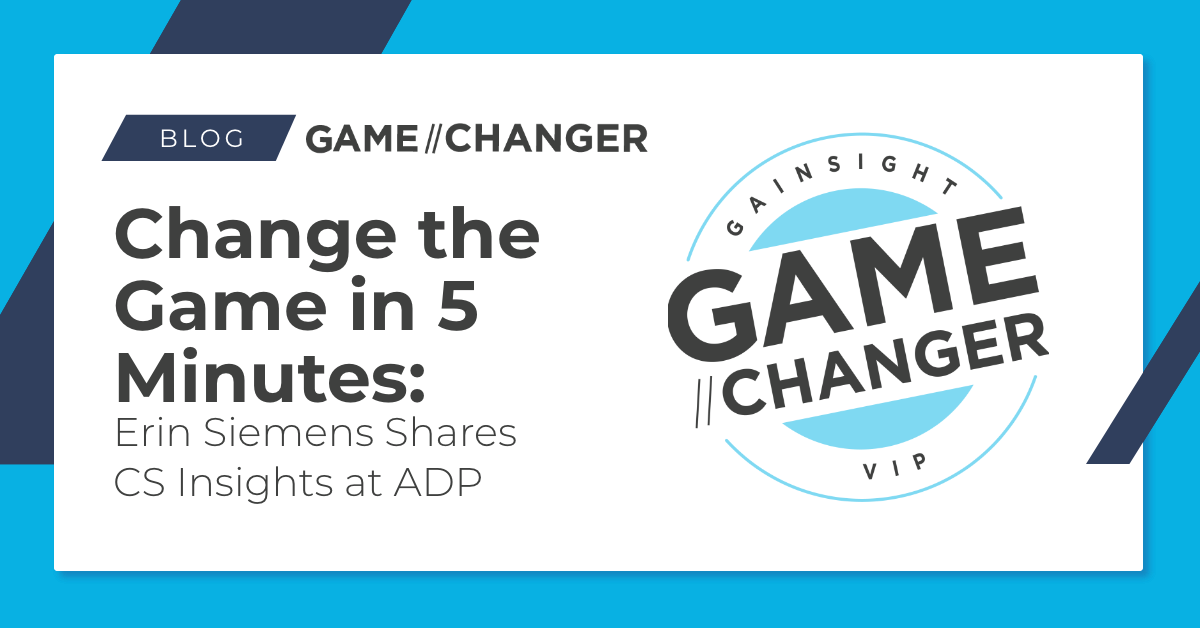
A Philosophy Unfolding
It began with a Venn diagram. For Erin Siemens, Senior Vice President of Client Success at Automatic Data Processing, Inc. (ADP), her leadership philosophy on customer success was sparked by a Venn diagram shared by Jeff Weiner, Executive Chairman and former CEO of LinkedIn. The three intersecting circles had titles of “Dream Big,” “Know How To Have Fun,” and “Get Sh*t Done.” Then in the space created by those intersecting circles was the phrase—People I Most Enjoy Working With. The truth is that most people want to be at that intersection—to balance the dream, fun, and drive while finding a group of like-minded individuals in the same work environment. That is not an easy task, especially right now, during this current upheaval. Gainsight’s Chief Customer Officer, Ashvin Vaidyanathan, sat with Erin to discuss the dream, the fun, and the drive, and how they relate to customer success, especially now.
According to Erin, she surrounds herself with people “who can dream big, align with clients, and understand what’s possible in the partnership. And they need to have fun because, honestly, it’s not an easy job.”
In technology, there is a large amount of unpredictability. “You might lose customers that you have invested in, even though you think that everything is going right, simply because of a sponsor change. When things simply aren’t going the way you planned them,” Erin assured us, “you need to have the ability to laugh.” Erin believes that without fun and finding what to do to make casual moments of joy, the work environment can become challenging. Gainsight understands that too. That’s why “childlike joy” is one of our core values.
Erin created a team that can have fun. In her mind, fun, humor, and joy give people a sense of resilience, which is essential to get through “the tough times.” The lightness of heart enables you to be there for your customers and always get stuff done. When those three ingredients—the dream, the fun, and the drive—come together within a group of team members, you can have a strong team and organization. When one of those qualities supersedes the others, you have an out of balance situation. Customers aren’t going to appreciate that. In addition to building a team around those three ideas, Erin used it to attract people she and others would want to work with and constructed a culture that reflects that philosophy. In cultures such as these, it inspires team members’ confidence and how they engage with the customers. “I would say that I have taken that theme forward in my leadership philosophy,” Erin said, “and leveraged it into customer success.”
The Emergence of Customer Success at ADP
When Erin joined ADP in 2007, her main focus was on client relationship building and retention to stay ahead of risk. When Erin became a decision-maker in her business division, many account management groups existed to retain and avoid risk. Yet, they were not connected in a unified CS mindset, practice, or platform. It was for that reason that ADP began to build a unified customer success organization.
ADP, as a technology enterprise, had its client relationship teams in place to support each individual area of the business. Initially, leaders across the company created roles that were called “Joint Account Executive,” “Relationship Manager,” or “Strategic Client Partner.” Each one of those had distinct strategies. They answered different KPIs of particular business divisions or products they supported. Erin referred to it as “a very ad hoc response to a very ad hoc strategy around customer success.” But remember, this was in the early days of customer success. There was little standardization nor common strategies in any industry.
Bringing It All Together
As ADP started to transform the overall business and drive collaboration, they developed a more unified service strategy, including what they termed as “status relationship management organizations.” ADP has cultivated a true industry best-in-class customer success philosophy within the last few years and integrated that philosophy across a unified customer success organization, now driven under one customer success leader.
ADP found themselves moving away from “firefighting mode with an official customer success organization in their business.” No longer reactive, they jumped on risk when necessary and moved toward predictive analytics capabilities to understand client behavior. They wanted to know what the client’s intentions were long-term, saving a significant amount of time and effort around by tailoring the approach accordingly. She also described the notion of CS involvement in Sales. “We do have a lot of selling. Technically, selling has to happen within the client base to encourage clients to move off legacy technology and onto strategic platforms to further that relationship.”
ADP began to design road maps and playbooks to build out their CS organization. “We built out a customer playbook. We built out a success plan template. We built out a success dashboard to allow us to have conversations with customers around how our partnership was working with them.” They used everything at their disposal, from spreadsheets to evolving client success plans shared through email. Everyone was trying to collaborate within the organization to share information on services and sales. It was difficult for everyone to understand what common priorities were for customers. But their customer success organization was asking all the right questions. Where is the customer relationship working? What are the gaps that we have to close together so that customers can get the most value out of their partnership?
In building a CS organization, ADP invested in reskilling talent across the various organizations the company was bringing together. They also began measuring both employee and customer activity and behavior. “We started saying it’s going to be tough to measure those lagging indicators of retention, NPS, and churn,” Erin explained. “But what we can do is measure what we believe are leading indicators that are going to impact customers.”
ADP became very deliberate in measuring things like success plans penetration and alignment of success executives to their book of business and their reviews of success. They made sure business review meetings were frequently happening and in a proper cadence. They were not only measuring activity. They evolved to include innovation and started to measure things like churn. ADP realized they had the data to know their business’s status, their expected loss, and even developed a churn target.
Enter Gainsight
As they continued to evolve their CS organization, ADP sought to bring on additional tools to drive workflow and run consistent figures to sustain their journey.
ADP engaged Gainsight’s strategic advisory arm to validate their CS processes and thinking. We also validated their playbooks and gave them feedback on areas for opportunity. They were evolving, but ADP realized there was still opportunity to create the workflows that were going to drive success and added efficiency.
When ADP implemented Gainsight a year ago, they began building custom dashboards to gain visibility into their client base, leveraging their own self-built data warehouse filters directly through Gainsight. To strengthen that CS data tool with additional fundamental insight into the client relationship, ADP transitioned to Gainsight 360.
With access to this data, ADP is using predictive analytics in Gainsight to produce client health scores. By utilizing these tools, they can drive initiatives and measure their effectiveness. They also see consistent behaviors within their CS organization, especially relative to their clients. This insight supports ADP’s Customer Success Executives (CSE), their version of CSMs, and demonstrates the significant value they bring.
The tip of the iceberg
According to Erin, she believes that ADP is just beginning to see the tip of the iceberg of things that are possible with Gainsight’s technology. ADP is seeing meaningful results across its initiatives, including the success plan functionality, which offers visibility and enables collaboration with other organizations across the enterprise. They provide updates to the clients’ data in Timelines. They have also rolled out read-only access to their sales partners and service partners.
Erin shared with excitement their capabilities in detail. “Now we have this capacity for Sales not to look at just one client. I’m also aligned to see what’s going on in the success plan. Let me deliver some joint account planning with my Client Success Executive. Let’s identify and leverage our relationships across this client’s ecosystem. By aligning these relationships, you can make sure that the client is driving to a shared objective. The client truly understands the full impact and outcomes that ADP is bringing to them. You also can identify opportunities to increase our share with that client.”
A big focus this upcoming fiscal year will be continuing to strengthen their CS organization. For instance, they are creating a technical engagement model that would leverage Gainsight’s Journey Orchestrator functionality. It will create efficiencies for expansion within ADP’s client base. It will also allow them to create a real tech touch model, gauging their smaller and single products. Most of all, ADP is excited that through these enhancements, many CSEs will be able to monitor risk more closely while actively improving engagements and adoption.
“I think the biggest impact of CS measurement in an organization is moving from measuring activity-based metrics to moving the metrics that the CEO cares about, the churn metrics, and the revenue metrics.” ADP’s efforts have led to a reduction in churn and an increase in client satisfaction. This is all transpiring across an incredibly diverse, complex client base on multiple products, including legacy products. And in the industry space that ADP is in, this kind of change and improvement is not easy. How does Erin feel about it all? “It’s such an emotional impact. It’s very much a team effort. CS is a puzzle piece here. That is a little puzzle piece of a huge puzzle. But it’s an important puzzle.” Well said, Erin. As for Erin Siemens, she dreams big for future goals and certainly has the drive to get stuff done for ADP. Now, for fun!
If you are interested in seeing the same kind of change in adoption, retention, and reduction in churn that ADP did, you need the same tools. Contact Gainsight to set up a demo and see what we can do for your business.

